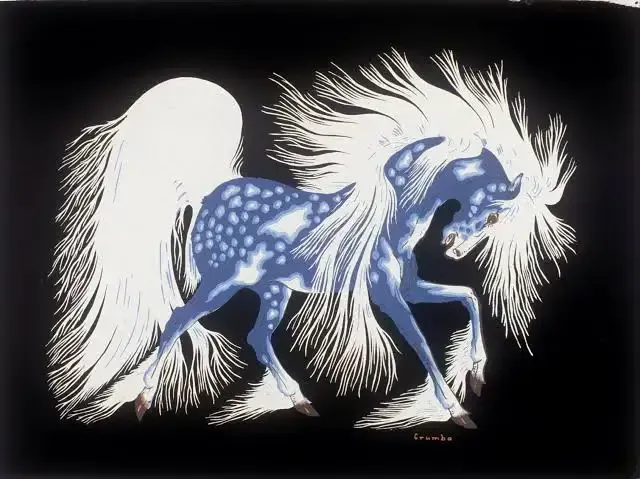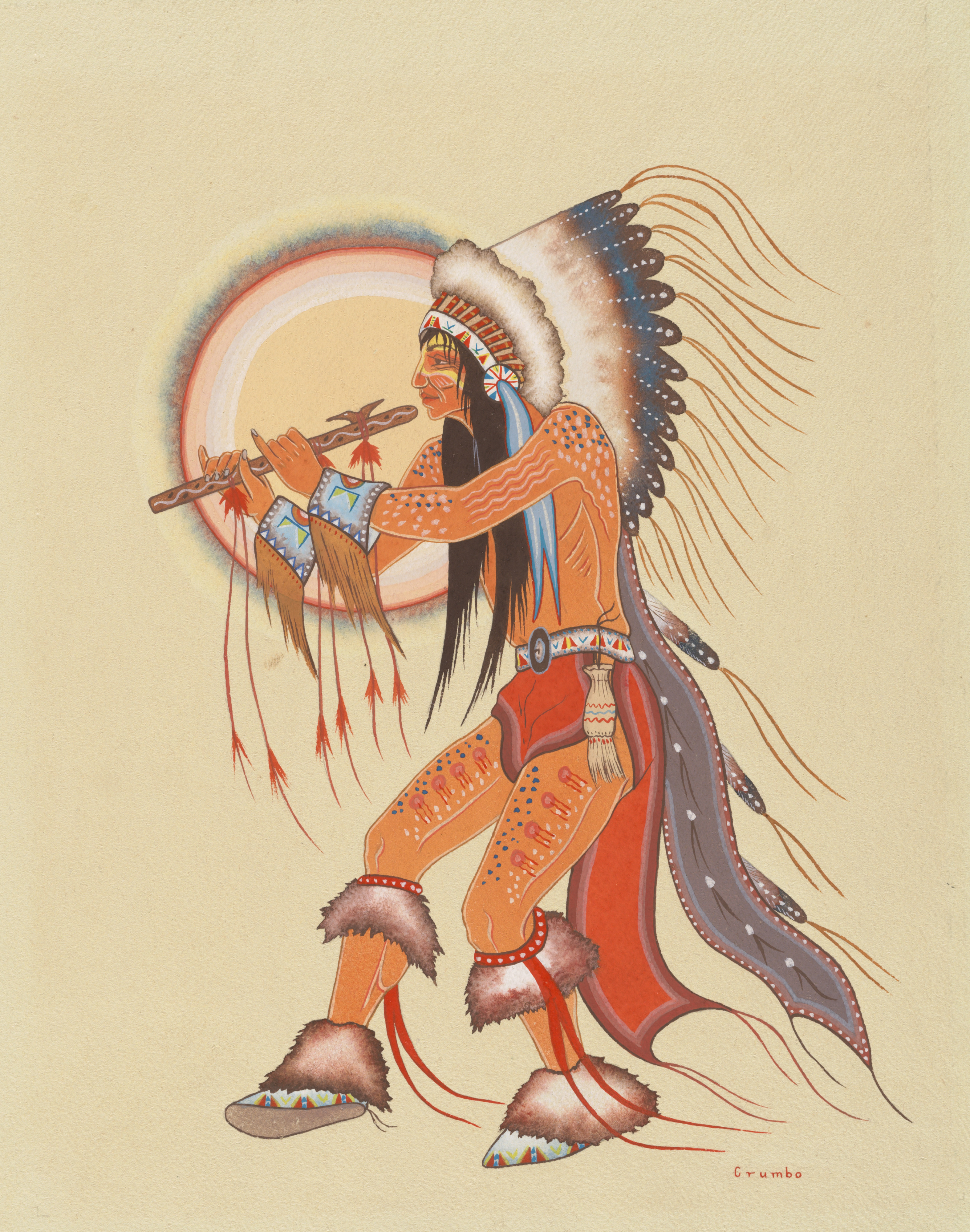
Bacone College: A Legacy Lost but Not Forgotten log Post
From Artistic Greatness to Financial Collapse: The Final Chapters of the Oldest Native American College West of the Mississippi
The Bacone Style: A Revolution in Native Art
Perhaps Bacone’s most lasting cultural legacy lies in the realm of art.
In the 1930s, the college founded its renowned Bacone School of Indian Art, nurturing a new generation of Native artists under visionaries like Acee Blue Eagle (Creek-Pawnee), Woody Crumbo (Potawatomi), and Dick West (Southern Cheyenne).
What emerged was the “Bacone style”—a uniquely Native artistic language. Characterized by flat, vibrant images depicting dancers, warriors, and sacred traditions, it drew inspiration from pre-Columbian design and 20th-century modernism. These works were more than paintings—they were acts of resistance and reclamation.

At the heart of this cultural movement stood the Ataloa Lodge Museum, built in 1932 and founded by Ataloa (Mary Stone McLendon), a Chickasaw singer, educator, and philanthropist. The museum housed more than 20,000 pieces of Native American art and cultural objects, including one of the nation's largest collections of Kachina dolls, beadwork, and paintings that told the story of tribal endurance through color and form.
In 2015, Bacone College was awarded a grant from the Association of Tribal Archives, Libraries, and Museums (ATALM) to professionally catalog and digitize its entire collection. With assistance from museum professionals, including representatives from the University of Texas, the collection was inventoried and preserved to professional archival standards.
However, later administrations did not preserve that work. Following the sale of the college library by a previous president, the art archives were relocated back to the Ataloa Lodge for safekeeping. But the building’s security was compromised. The museum was later vandalized, and several important pieces were stolen—a painful loss to both the institution and the broader Native community.
Though some objects were taken, the legacy of Bacone’s art lives on—not only in museum records, but in the creative movements it inspired. The Bacone style remains a living tradition, echoed in exhibitions, artists' workshops, and tribally-led cultural programs across Indian Country.
Healing Hands: Oklahoma’s First Associate Degree in Nursing
Bacone College was not only a center for cultural expression—it also addressed the urgent healthcare needs of its communities.
The school established Oklahoma’s first associate degree in nursing, a groundbreaking program that trained Indigenous nurses to serve rural, underserved, and tribal populations. These weren’t just healthcare professionals—they were cultural translators, bridging Western medicine with Native understanding.
They knew that healing often begins with trust—and that compassion rooted in shared experience can save lives.
Bacone’s nursing graduates fanned out across Indian Country, many returning to reservations or tribal clinics, where they became lifelines for communities too often ignored by mainstream health systems.
Years of Struggle: Controversy, Decline, and Closure
Despite its historic legacy and passionate base of alumni and advocates, Bacone College’s final years were fraught with financial collapse, political roadblocks, and leadership instability.
In 2018, Bacone sought a transformation: to become a tribally controlled college, which would make it eligible for consistent federal funding from the Bureau of Indian Education (BIE). At the time, this was viewed by many as the school’s best hope for survival.
But the effort collapsed—not because tribes weren’t willing to support Bacone, but because of structural and governance issues that proved insurmountable.
At the heart of the controversy was Bacone’s Board of Trustees, largely composed of representatives from state-recognized or non-federally recognized tribes. While these individuals had long-standing ties to Native communities, they did not meet BIE criteria, which require that tribally controlled colleges be governed by federally recognized tribes.
When Bacone attempted to reorganize the board and partner with federally recognized tribes to meet those requirements, several existing board members refused to step down. This refusal effectively blocked Bacone from qualifying for tribal college status—and with it, access to desperately needed funding.
This internal impasse proved devastating.
Over the following years, Bacone spiraled into financial distress. Reports surfaced of faculty furloughs, unpaid salaries, legal disputes, and deteriorating campus conditions. Leadership changed hands multiple times, but each new administration struggled to stabilize operations or restore trust among donors, students, and accrediting bodies.
By 2024, Bacone had suspended all academic programs. Students were transferred or left in limbo. Faculty and staff were let go. Dorms emptied, and a once-vibrant campus faded into stillness.
In June 2024, Bacone filed for Chapter 11 bankruptcy, seeking to restructure its debts and preserve operations. But the effort was short-lived. In May 2025, following findings of gross mismanagement and failure to meet federal reporting requirements, a U.S. Department of Justice trustee filed a motion to convert the case. A federal judge approved the motion, and Bacone was placed into Chapter 7 bankruptcy—triggering the formal liquidation of the college’s remaining assets, including land, buildings, and potentially even the collections housed in the Ataloa Lodge Museum.
The loss was—and is—immeasurable. Bacone was not simply a school; it was a living expression of Native aspiration, art, and self-determination.
But the Flame Lives On
Yet Bacone’s spirit does not die with its closure.
Its alumni carry forward the values nurtured on its campus—in tribal governments, hospitals, classrooms, churches, and galleries. The Bacone style remains a living tradition, taught and celebrated across Native communities and museums. And its art, if protected, will continue to testify to the power of Indigenous creativity for generations to come.
What we’ve lost is immeasurable. But what Bacone gave us—vision, dignity, beauty, service—cannot be undone.
As we grieve the loss of this historic institution, we must also rise to preserve what remains. Let Bacone’s story be not a funeral song, but a call to action:
To invest in Indigenous education
To protect Native art
And to ensure that the oldest Native American college west of the Mississippi is never forgotten.
